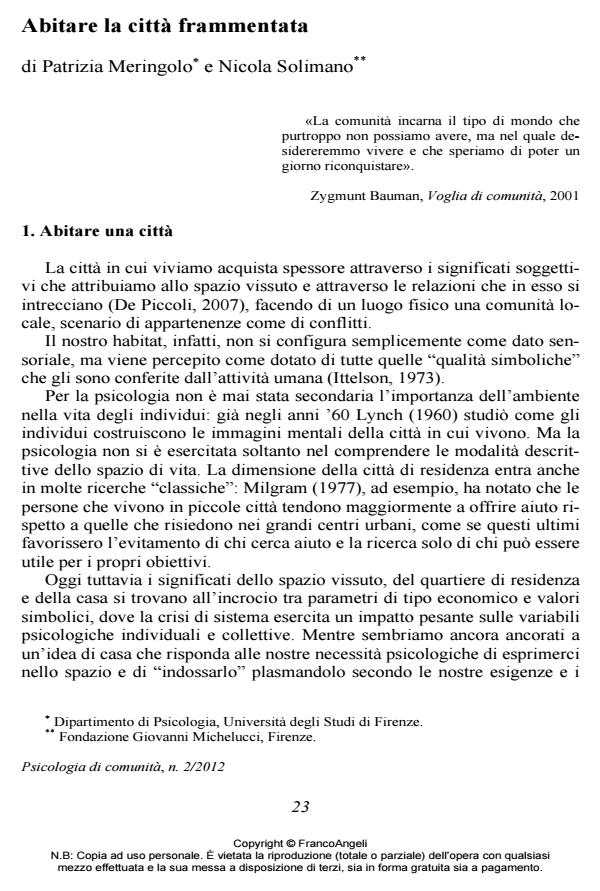Living in a fragmented town
Journal title PSICOLOGIA DI COMUNITA’
Author/s Patrizia Meringolo, Nicola Solimano
Publishing Year 2013 Issue 2012/2
Language Italian Pages 11 P. 23-33 File size 353 KB
DOI 10.3280/PSC2012-002003
DOI is like a bar code for intellectual property: to have more infomation
click here
Below, you can see the article first page
If you want to buy this article in PDF format, you can do it, following the instructions to buy download credits

FrancoAngeli is member of Publishers International Linking Association, Inc (PILA), a not-for-profit association which run the CrossRef service enabling links to and from online scholarly content.
This contribution collects remarks coming from two authors, with different competences, about psychological and city planning aspects related to housing. First section analyzes psychosocial aspects of the urban life and deepens how different qualities of housing may influence individuals, groups, communities, particularly when weaknesses and difficult inclusion happen, because of age, mental disease or socioeconomic status. The second section is focused on city planning and, beginning from the significance of interventions in public housing in Italy, deals with the matter related to housing today, to the social and planning fragmentation of our towns and the difficult (and lacking) political government of local community.
Keywords: Housing, urban life, social marginalization, city planning, territorial policies
Patrizia Meringolo, Nicola Solimano, Abitare la città frammentata in "PSICOLOGIA DI COMUNITA’" 2/2012, pp 23-33, DOI: 10.3280/PSC2012-002003